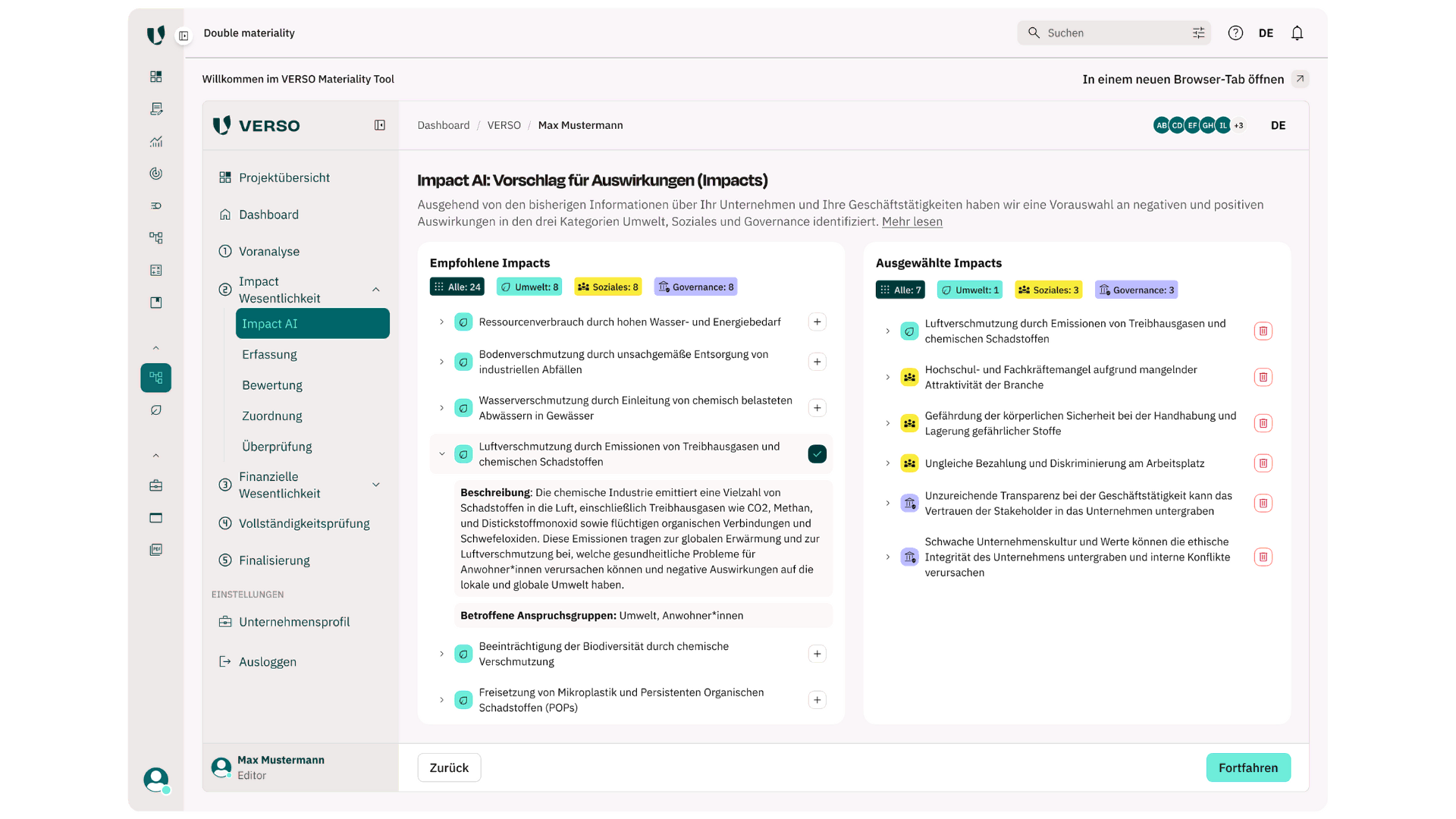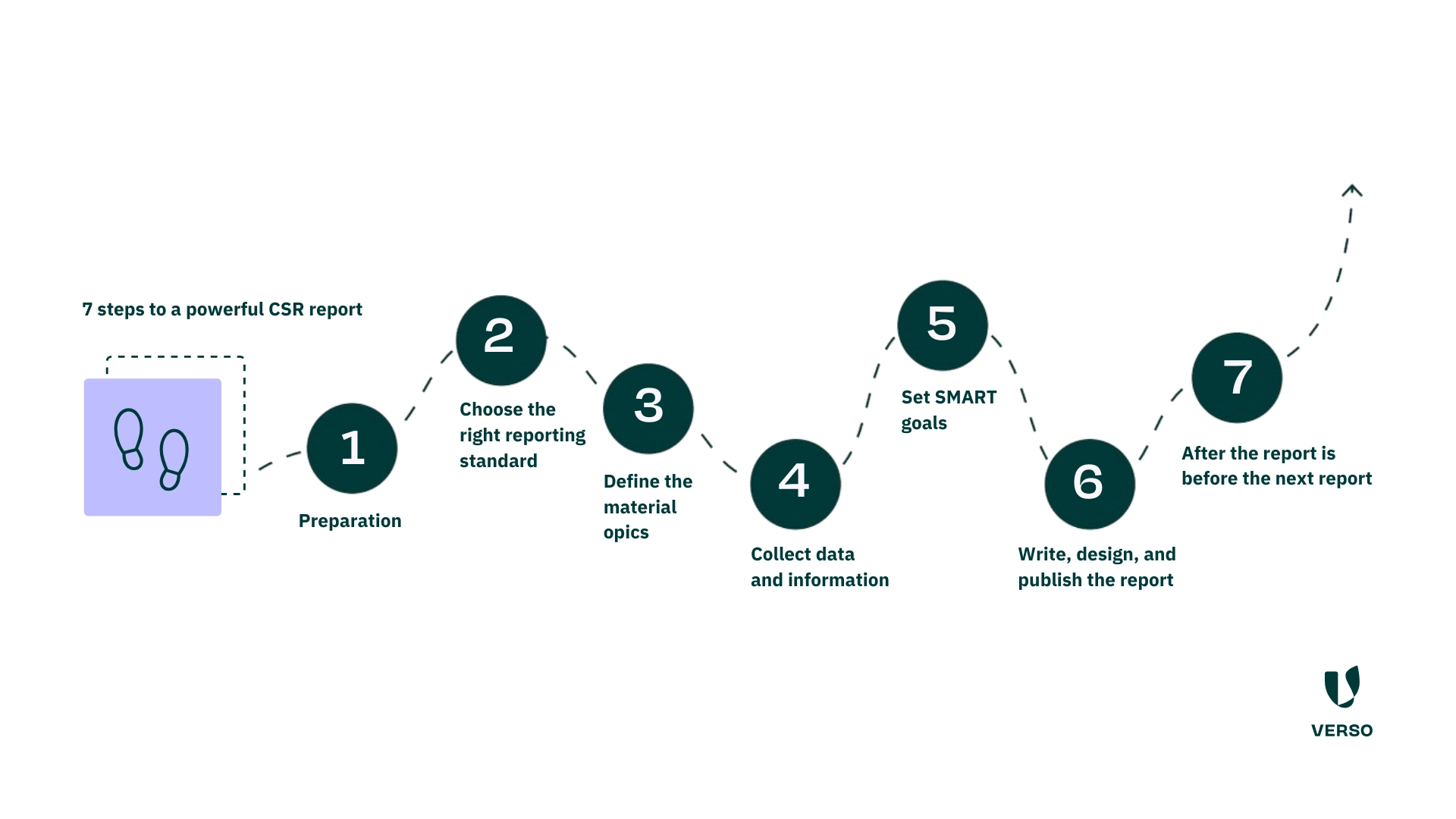
Sustainable Business Practices: The Business Case for SMEs
Stakeholders, ESG obligations, or simply conviction – For many reasons, sustainability is on the agenda of companies. Whether mandatory or voluntary: sustainability must not only be promised, it must be implemented. This article explains why sustainable business practices are important for all companies – from SMEs to large corporations.
Why is Sustainable Business Important for Small and Medium-sized Enterprises (SMEs)?
Sustainability creates transparency in the supply chain
Sustainable business practices are becoming a prerequisite for medium-sized companies to remain supply-capable and competitive in the long term – as large companies today expect full transparency across the entire supply chain.
Many small and medium-sized enterprises (SMEs) supply products or materials to larger companies that are subject to legal requirements such as the Supply Chain Due Diligence Act (LkSG), the Corporate Sustainability Reporting Directive (CSRD), the EU Deforestation Regulation (EUDR), etc. These companies are often also bound by industry-specific guidelines that demand sustainability information from the supply chain.
Large companies must not only disclose their own ESG information but also that of their suppliers. This means that you, as a supplier, are also affected by the regulations and will be asked for extensive sustainability information:
- You will need to undergo thorough due diligence processes, such as the EcoVadis sustainability assessment, which identifies potential risks to people and the environment in the supply chain.
- Proof must often be provided not only by suppliers but also by sub-suppliers.
Sustainability as a factor for financing
Sustainable business practices not only improve the ESG rating but also provide access to better financing terms – whether for loans, investments, or insurance.
Medium-sized companies seeking capital from investors or loans from banks should be prepared for ESG inquiries. In practice, the ESG rating directly influences credit terms – the better the rating, the more favorable the loan conditions.
Investors are also increasingly incorporating ESG criteria into ratings and M&A decisions. At the latest, during transactions or investment decisions, robust sustainability metrics will be expected from you.
In addition, (re)insurers also require ESG information from their clients. Sustainability risks are increasingly being incorporated into the risk assessment during contract negotiations, which can directly impact insurance premiums and coverage.
Sustainability expectations from customers and business partners
Anyone who wants to have a say, collaborate, or bid today needs a clear sustainability position – because ESG criteria are increasingly determining partnerships and contract awards.
In partnerships, collaborations, and tenders, certifications and ESG information are increasingly being requested to demonstrate a company’s sustainability ambitions. When entering negotiations, you need to be well-prepared:
- No Open Doors without ESG Certifications: A prerequisite for serious discussions – alongside, for example, well-known standards for information security – are increasingly ESG-related certifications. Undergo the assessments early – they are often time-consuming and cannot be “quickly submitted.”
- Sustainability and ESG Criteria in Tender Processes: If there is a tender, your company might be excluded from consideration due to the lack of a robust sustainability strategy. This is demonstrated, among other things, through recognized ESG certifications. With sustainability and ESG criteria in tender processes, companies want to ensure from the outset that ecological and social standards are adhered to in the supply chain.
- Sustainability also plays a significant role in other quality standards, such as Fairtrade, organic certifications, employer rankings, or ISO standards: ESG criteria are also requested here.
Protection against greenwashing accusations
Simply labeling oneself as “green” is a thing of the past. With the Green Claims Directive and the EmpCo Directive, the EU specifically outlines what constitutes greenwashing and what does not.
- Soon, companies will be required to scientifically verify the accuracy of their environmental claims. Failure to do so will not only result in reputational damage, but also actual legal and financial consequences.
You certainly do not intentionally engage in greenwashing, but it can easily happen unintentionally in small and medium-sized enterprises: many greenwashing accusations originate from marketing activities that portray the company in too favorable a light. This often happens when a company’s sustainability data is not transparent.
A climate and sustainability strategy ensures transparent sustainability communication: through a data-driven strategy, KPI tracking, and a CO2 balance, you can communicate numbers, facts, and goals in a verifiable manner.
Improved risk management and resilience
A solid sustainability strategy helps you identify ecological and social risks early – not just within your company but throughout the entire value chain. The foundation for this is the Double Materiality Analysis, which adds a holistic ESG perspective to your existing risk management – including the consideration of opportunities.
This allows risks to be assessed in a targeted way, measures for avoidance or reduction to be derived, and their impact in ESG management to be systematically monitored. This makes your company more resilient to climate impacts, geopolitical changes, or resource shortages – while also saving costs and preventing future losses.
Efficient resource use and optimized processes
A well-thought-out sustainability management system helps you use resources more efficiently. It drives process optimizations and innovations – for example, through energy-saving machines or the recycling of production waste. This saves raw materials, reduces costs, and protects the environment.
With effective ESG management, you not only reduce waste and energy consumption but also save time: you focus on the truly important issues – and can drive them forward in a targeted way. A clear advantage for the future viability of your company.
Holistic corporate strategy and future viability
Individual measures are of little use if the strategic connection is missing. A sustainability strategy provides the necessary overall view: All measures are part of a larger plan – rather than isolated individual initiatives.
The foundation for this is the Double Materiality Analysis, which helps you identify the most important topics. This results in a long-term, systematic strategy – ideally integrated into your corporate strategy. In this way, sustainability becomes a top priority and is managed, measured, and communicated in a targeted manner – for example, with a suitable software solution like the VERSO ESG Hub.
How do you embed sustainability in your company?
For sustainable business practices to be more than just a good intention, they must be deeply embedded in the company. This is achieved with the following building blocks, which demonstrate how small and medium-sized enterprises can move into action in a structured and impactful way.
1. status quo and material topics
Before developing a sustainability strategy, a solid status-quo analysis is needed as a foundation – it provides transparency on data, processes, and challenges within the company. Building on this, a materiality analysis highlights which ESG topics are truly material and where the greatest impacts, risks, and opportunities lie.
2. Setting SMART goals and appropriate measures
Goals are the heart of any sustainability strategy and should be scientifically grounded, formulated in a SMART way, and closely linked to the corporate strategy to avoid conflicts of interest. The development of appropriate measures is crucial for implementation – ideally in collaboration with employees and relevant stakeholders who can contribute practical solutions.
3. Creating awareness for sustainability across the company
Sustainability is a company-wide team project – and that’s why it requires a shared awareness and clear alignment. When developing your sustainability strategy, you should define vision, mission, and values to provide direction, motivate employees, and anchor the topic effectively in the overall strategy. Being transparent about ambitions and strategically using internal communication lays the foundation for living sustainability throughout the company.
4. Moving into implementation: Control is key
After the strategy, the real work begins: Implementing ESG measures is a long-term process that requires continuous adjustment and perseverance. To maintain an overview and be able to respond flexibly to new developments, structured ESG management, regular monitoring, and transparent communication – both internally and externally – are essential. Only in this way will progress remain visible, stakeholders stay engaged, and motivation within the company be maintained.
Start with VERSO
Now it’s time to move from planning to action. We support you every step of the way – with the right software solutions and services throughout your entire sustainability journey: from the first report and goal setting to tracking concrete measures. Step by step, you will build the foundation for sustainable business practices in your company.
This might be also interesting for you:
Subscribe to our newsletter!
Sign up and receive regular news about:
- Current ESG topics and legislative changes
- Individual advice from the VERSO experts
- News about VERSO
- Trusted by 250+ customers




















